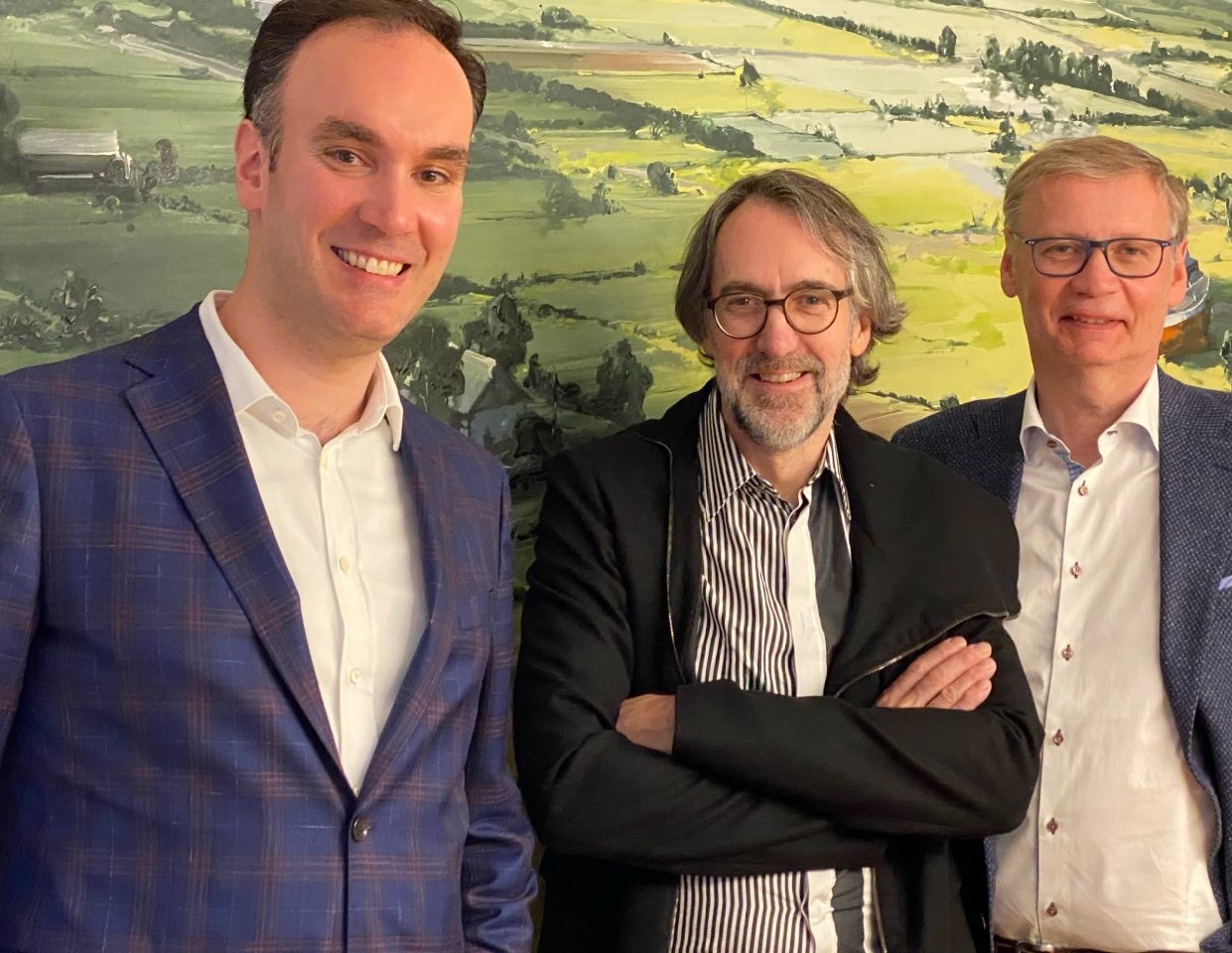
TV presenter Gunther Jauch, 64, is the most famous German you’ve never heard of. His quiz show Wer Wird Millionar?, or “Who Wants to Be a Millionaire?” screens during primetime on Monday evenings on the RTL channel and typically attracts more than 5 million viewers. But there is another side to the intelligent and witty Jauch – he is also the owner of the Weingut von Othegraven wine estate in Kanzem in the Saar sub-region of the Mosel.
When Jauch and his wife, Thea, purchased the estate in 2010, he was an outsider who had jumped into the wine business without training or experience. On another level, however, he was an insider: The seller, Dr. Heidi Kegel, was a relative of his, so von Othegraven is now the seventh generation of family ownership. Jauch recalled how as a child he often played in the estate’s park-like grounds. Back then, in the 1960s and ‘70s, the estate’s reputation was at its zenith. “At dinner, we children always got a very small glass of wine,” he told me. That seems to have positively infected him with the wine bug.
Today it’s rare to get a chance to taste a von Othegraven wine from that period, and even rarer to taste a handful of the best the estate has ever made, as I did recently in Berlin with Jauch himself.


When the quality of the von Othegraven wines became erratic at the end of the 1970s, it turned many collectors off. Mature wines from top Mosel producers of the period who always made top-quality wines, like Egon Müller-Scharzhof or Joh. Jos. Prüm, are much easier to find. Then in July 2020, Chris Radic of Pracht Berlin had a stroke of luck when Christie’s auctioned the collection of Benjamin Ichinose in San Francisco. Radic bought some very rare bottles, and they enabled him to stage a tasting that took participants back to the heyday of von Othegraven.
The very first wine, the incredibly complex and super-elegant von Othegraven Riesling Mosel Kanzemer Berg feinste Auslese 1959, rated 99 points and showed why the reputation of this estate was then unexcelled in the region. For its age, the wine was incredibly fresh, and time had perfectly integrated the natural grape sweetness to create a near-perfect harmony. It proved what a spectacular site the Kanzemer Berg – which is now known as Kamzemer Altenberg – really is.
“The vineyard is as steep as the Matterhorn – that’s a 65% grade from the foot to the summit,” Jauch said, sounding as though he were a contestant answering a question on his own quiz show.

Today the von Othegraven estate has 17.3 hectares (43 acres) of vineyards, in a handful of steep sites, with slate soils all planted 100% with riesling, but during its first period of glory, the estate’s holdings totaled just five hectares. Von Othegraven’s first heyday began in 1921 when Max von Othegraven took over the estate and landed a coup with his first harvest, making one of the legendary wines of this vintage of the century. After his death in 1968, his widow, Maria, kept the fire alive for a further decade.
The estate reminds me of one of the beautiful smaller chateaux in St.-Emilion, like Figeac, or Vieux Chateau Certan in Pomerol, except for that fine Matterhorn right out back. “Because von Othegraven history goes back into the Middle Ages, visitors think the house must be old, too,” Jauch explained. “They’re often disappointed to hear that it was actually built in 1954 after the previous buildings were badly damaged at the end of World War II.”
During the last decade, the focus of Jauch and his winemaker Andreas Barth (who also makes wine at his own Lubentiushof estate in the Mosel) has been to rebuild the reputation through ever-improving wine quality. No further expansion of the vineyard area or new products are planned. The closest Jauch has come to the latter is the von Othegraven Riesling Mosel Wiltinger Kupp GG 2018, one of the many remarkable dry wines the estate has produced in recent years. It is very cool and refined for the exceptionally warm growing season, and that’s the kind of comment that was often made about the von Othegraven wines during the estate’s first heyday. This fact, along with our many other recent high ratings for these wines, is good reason to state that von Othegraven is back.
To experience one of the estate’s mature jewels, you can visit Jauch’s Villa Kellermann restaurant in Potsdam, where several of them feature on the wine list. “I don’t cook there, so you don’t need to be afraid to go!” Jauch noted with his usual irony.
– Stuart Pigott, senior editor

